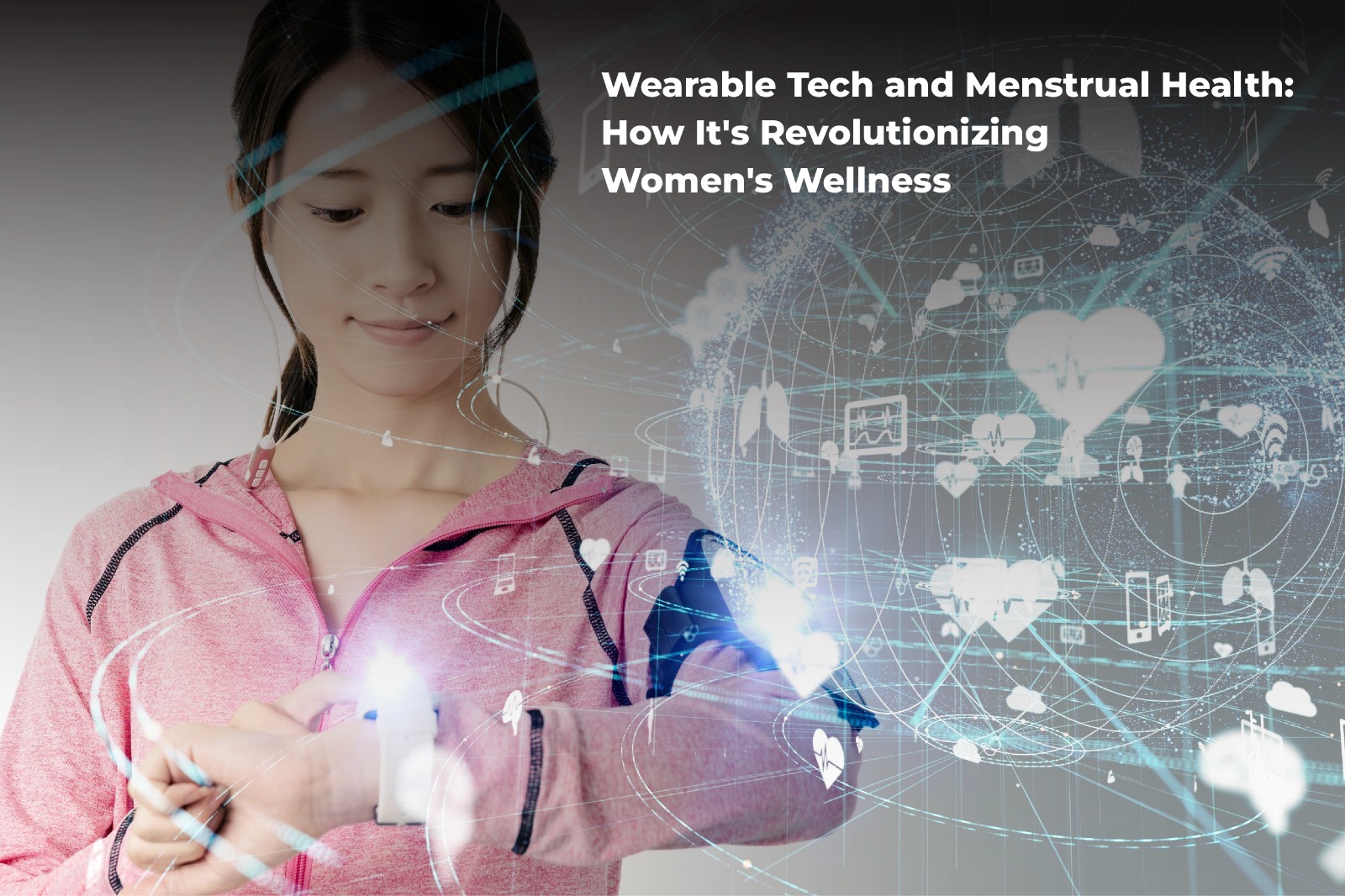Women have long used patches for contraception, hormone replacement therapy (HRT), and even menstrual tracking. While not a new concept, recent innovations are expanding the potential of wearable technology in women’s health—ranging from breast ultrasound devices to treatments for low libido in post-menopausal women.
Wearable technology is revolutionizing women’s wellness, particularly in menstrual health. Through integrating health sensors, data tracking, and advanced algorithms, wearable tech offers a new level of insight and control over women’s reproductive health. Here’s how it’s transforming the way women manage their menstrual health:
1. Tracking and Predicting Menstrual Cycles
Wearable devices like smartwatches and fitness trackers have period-tracking apps that help women monitor their menstrual cycles. These tools can:
- Track cycle length, ovulation, and period symptoms like cramping or mood changes.
- Predict future cycles based on past data, helping users plan around their periods, whether for daily activities, travel, or family planning.
2. Symptom Monitoring and Insights
Many women experience a range of symptoms before and during their periods, including mood swings, bloating, fatigue, and pain. Wearables can now track:
- Physical symptoms like changes in body temperature, heart rate, and sleep patterns that fluctuate with hormonal cycles.
- Mood and emotional states through input or detection of stress levels, offering insights into mental and emotional well-being.
These insights can help women understand how hormonal changes affect their overall health and make more informed decisions about managing symptoms.
3. Managing Menstrual Pain and Discomfort
Some wearables, such as devices designed specifically for pain relief, help manage menstrual cramps by delivering targeted heat or vibration therapy. These non-invasive devices can provide:
- Immediate relief from cramps without the need for medication.
- Portable and discreet options that allow women to continue their daily routines while managing discomfort.
4. Improved Fertility Awareness
For women trying to conceive or avoid pregnancy, wearable tech offers advanced fertility awareness features. These devices can:
- Track basal body temperature, which indicates ovulation windows.
- Monitor cervical mucus and other fertility indicators.
- Provide real-time feedback on fertile days, making natural family planning more effective.
Some wearable fertility monitors are highly accurate and help women better understand their reproductive health.
5. Personalized Health Recommendations
Advanced AI algorithms in wearable devices can analyze data and provide personalized health recommendations. These could include:
- Tailored exercise routines based on hormonal phases to optimize energy levels.
- Nutritional advice to help manage cravings or balance hormone levels.
- Stress management techniques, such as meditation or breathing exercises, especially during PMS.
6. Hormonal Balance and Menstrual Cycle Synchronization
Certain wearable devices track patterns of hormonal fluctuations and can sync this data with fitness, sleep, and mood patterns. This information can help women:
- Understand their hormonal cycles better.
- Optimize their exercise, sleep, and nutrition routines according to different phases of the menstrual cycle, boosting overall wellness.
7. Integration with Healthcare Providers
Some wearables offer the ability to share menstrual health data with healthcare providers. This allows for:
- More accurate diagnoses of conditions like polycystic ovary syndrome (PCOS), endometriosis, or irregular periods.
- Better management of hormonal treatments and medications.
- Enhanced patient-doctor communication, leading to more informed care.
8. Mental Health and PMS Tracking
Wearables with mood-tracking capabilities are helping users understand how hormonal changes throughout the cycle impact mental health. By:
- By tracking mood patterns related to PMS or PMDD (premenstrual dysphoric disorder), women can find proactive ways to manage anxiety, depression, and irritability.
- Providing early warnings of changes in emotional states allows for better self-care practices.
9. Long-Term Health Insights
Wearable tech allows for long-term tracking of menstrual and hormonal health, helping women spot patterns or irregularities over time. This is crucial for:
- Identifying potential hormonal imbalances or menstrual disorders early on.
- Tracking menopause symptoms as women age, offering support through perimenopause and post-menopause with detailed health data.
10. Increased Awareness and Empowerment
Most importantly, wearable tech is helping to destigmatize menstrual health by bringing it into the forefront of digital health. It empowers women with knowledge and control over their bodies, enabling them to:
- Take a proactive approach to their reproductive health.
- Make informed lifestyle decisions based on real-time data about their cycles.
- Advocate for better healthcare services and options tailored to their unique needs.
Wearable technology in menstrual health is not just about convenience; it’s about empowering women to better understand and manage their wellness. The future holds exciting potential for even more personalized, accurate, and accessible health solutions tailored specifically to women’s reproductive health.


